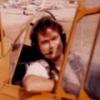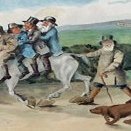

stevehed
Members-
Posts
1,041 -
Joined
-
Last visited
Profile Information
-
Gender
Male
-
Location
UK
Recent Profile Visitors
3,823 profile views
stevehed's Achievements

Very Obsessed Member (5/9)
1.2k
Reputation
-

Frog 1/72 Westland Wallace into a Wapiti
stevehed replied to gamevender's topic in Ready for Inspection - Aircraft
Looks like a Wapiti. I'm with JWM. Did this conversion when Aeroclub parts were easy to get. Fuselage length stayed as is but it looks the part. Still got it. -
My first build, not long after the kit was issued, had the pilot in a similar pose. The truth is, his legs are too long. Future builds have always involved either a substitute or a reduction in height.
-

Kovozávody Prostějov 1/72 Avia B.21
stevehed replied to AdrianMF's topic in Work in Progress - Aircraft
Glad to see this kit being built. I got this one and the Polikarpov Po2 before Covid when they were really cheap. I had vague conversion potential in mind and they resided unmade for some years. Finally, got built as WW1 What If 1919. The demise of PictureTrail has removed the build photos but the end results are on pp11-12. Like Adrian, I like these early KP kits. https://www.whatifmodellers.com/index.php?topic=40465.150 -

Kovozávody Prostějov 1/72 Aero A.100
stevehed replied to AdrianMF's topic in Work in Progress - Aircraft
Built one a few years back. Don't recall any problems and like Adrian I like KP kits. Made mine as a SCW whif, much simpler than trying to convert to A101. -

Airfix 1/72 Royal Aircraft Factory BE2c kit leftovers question
stevehed replied to Kari Lumppio's topic in Aircraft Interwar
I doubt there is much use in inter war aircraft. The four blade prop could be used with WW1 DH2 and FE8 pusher fighters. The engine is a V 4 of 70 -90hp so doubtful if it was used much post war. I think I'd keep the wheels and seats for WW1 spares as well. -
Totally agree. Not prepared to pay silly money but I'd love to see the Fairey III series, the Gordon and Seal and my personal favourite, the Armstrong Whitworth Atlas. Toyed with a conversion using the Matchbox Sisken but never got beyond the dreaming stage. And don't get me started on German WW1 two seaters. KP have made a decent start recently but where are the DFW CV and LVG CV ? Sorry, rant over.
-
Hope this helps Adrian, and anybody fancying a Wapiti look a like without too much much hard work. Only serious work was constructing the rear cockpit turret. Last picture is a comparison to the Maquette R1/DH9a which I finished as a Twenties kite.
-
Lovely job, Adrian. Very impressive. I had a go at using this kit to make a Wapiti many years ago. I didn't shorten the fuselage or reduce the width. I simply installed the rear cockpit cover and bored a round hole through it and fitted a round plastic card turret. Back then, Aeroclub were in full swing and white metal Scarff ring and Lewis guns and Jupiter engines were readily available. The undercarriage was reversed and that was all I did. Still got it and from a reasonable viewing distance it still looks like a Wapiti.
-
A little late but what about this one.
-

"What if " GB ? 47 votes in the bunfight !!
stevehed replied to Erwin's topic in 2024 Bunfight Archives
Can't believe it's nine years since the last What If GB. I'm always game for whifs so put me down please. -
Late on parade for this GB. There's not much this year that appealed to me but I do have a Revell DH2 in the stash but I totally forgot. Never mind, age related perhaps, but my congratulations on building this kit. It really looks the part and the rigging is excellent. The Merlin looks to be a very long background project and I suspect both these kits are very hard to find nowadays. If anyone is desperate, there is an alternative to those not adverse to a little kit bashing. I used a Frog/ Novo Vickers Vimy as the donor kit and ended up with a reasonable look like. https://www.tapatalk.com/groups/airfixtributeforum/frog-1-72-airco-dh10a-conversion-t34158.html
-
The joys of early Roden decals. But a good rescue, one of my favourite WW1 types.
-
Hi J-W, It might be my eyes but is there an aperture in one of the side windows. In the 7th post is Foto:Archivo Oscar Rimondi which shows the starboard side of LV-HAB. To the right of the letter B are three windows. There appears to be a possible opening within the centre window. A waist gun that could be fired from either side might provide a makeshift defensive armament. I believe the Italian SM81 sported similar weaponry plus such a position does not preclude an additional ventral position. HTH, Steve







